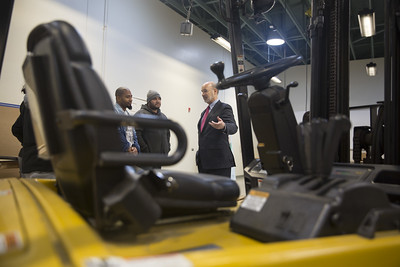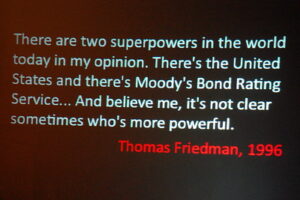I’m reading an interesting book right now, called After the Ivory Tower Falls: How College Broke the American Dream and Blew Up Our Politics―and How to Fix It by Will Bunch. The book gives a retrospective on higher education since World War II. One concept it discusses is workforce development.
According to Bunch, workforce development was a politicized reaction to the democratization of higher education via the GI Bill. Prior to the end of World War II, higher education was mostly reserved for young men from the country’s wealthiest families. The GI Bill made post-secondary education available for a far broader swath of Americans.
Inspired lawmakers adapted the GI Bill to form the Higher Education Act of 1965, which spawned the federal student loan program among other things. Fast forward to the Reagan Administration, which slashed funding for Higher Education, and encouraged (or forced) states to do the same. It seems the antidote to the notion of a sprawling, liberal education was something called “workforce development.”
In a paper dating back to 1999, University of California researcher Wilbur N. Grubb described “workforce development” as an educational activity that “provides individuals with the information necessary for employment including basic content, specific technical information, and academic competencies.”
In other words, workforce development equips people with the bare minimum knowledge they need to perform a workplace function. It is a facsimile of authentic occupational and vocational education. Today’s non-degree certificates and bootcamps have taken it to its extreme. This Reagan-era zombie has done little to change the fortunes of lower income households, positively or negatively. However, it has steadily transferred wealth from middle class households to upper class ones without increasing the percentage of upper income households.
Let’s rethink workforce development
Likely, the largest failing of the strategy is its focus on the individual. Despite the promises of upward mobility and better earnings, workforce development does little of that. A substantial body of research shows that workforce development’s highest potential occurs when it is applied at the community or regional level.
As designed and implemented, workforce development can address the training needs only of low-wage employers. (More often than not, low wage workers are women and minorities.) Training or retraining a worker to fill a low-wage position does little to create economic mobility for the worker. Further, what does little for the resident also does little for the resident’s community.
So, let’s stop focusing workforce development efforts on the individuals – who derive little to no sustained benefit from it – and instead develop our community in ways that make it attractive for employers to locate here.
Photo Credit: Governor Tom Wolf, via Flickr






























